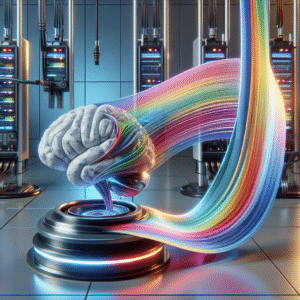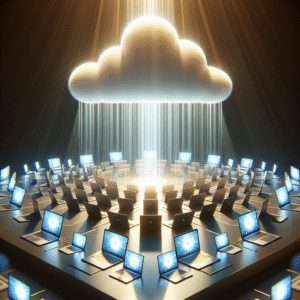Have you ever wondered how new technologies can drastically change the way we communicate and store information? In today’s fast-paced digital world, the rise of distributed cloud technologies has caught my attention. This innovation is reshaping how businesses operate and how we, as individuals, interact with our digital environments.
Understanding Distributed Cloud Technologies
At its core, distributed cloud technology refers to the distribution of cloud services across various locations while still being managed from a central point. This means that instead of a single, centralized server where all data and applications are stored, the computing resources and applications are spread out across multiple locations. This setup provides several benefits that I find incredibly fascinating and useful.
The Concept of Data Distribution
Data distribution allows for a more efficient allocation of resources. I’m always interested in how efficiency can lead to better performance. When data is stored closer to the end-users, not only does it reduce latency—meaning that I can access the information faster—but it also provides redundancy, enhancing reliability. If one server fails, data can still be accessed from another location.
Benefits of Distributed Cloud Technologies
It’s important to highlight the advantages of adopting distributed cloud technologies. I believe these benefits can positively impact both individuals and businesses in significant ways.
1. Improved Performance
One advantage that stands out to me is improved performance. When data is dispersed across different geographical locations, I experience quicker load times and reduced delays. This decentralized approach minimizes the distance between users and the server.
2. Enhanced Security
Security is a crucial element in the digital age, and distributed cloud solutions provide numerous layers of protection. By distributing data across various locations, it becomes substantially more challenging for malicious actors to access or compromise it. As someone who values my privacy and the security of my data, this aspect resonates deeply with me.
3. Greater Scalability
The flexibility that distributed cloud technologies offer is another feature I appreciate. If my needs increase, scaling up resources can often be done quickly and without the delays associated with traditional IT infrastructures. Businesses can adapt to demand almost in real-time, allowing for growth without the usual headaches.
Use Cases of Distributed Cloud Technologies
Understanding how distributed cloud technologies can be practically applied makes the concept even more intriguing for me. Here are some prominent use cases that illustrate their impact.
1. Content Delivery Networks (CDNs)
CDNs are a classic example of distributed cloud technologies in action. They host web content over a network of servers, ensuring that I can access it from the server closest to me. This results in faster loading speeds, which is crucial for websites and applications that cater to a global audience.
2. Edge Computing
Edge computing moves data processing closer to the source rather than relying solely on centralized data centers. This technology is particularly effective for applications like IoT devices, where real-time data processing is required. I find the idea of devices communicating and processing data so close to the source fascinating.
3. Multi-Cloud Strategies
Many organizations today utilize a multi-cloud strategy, which involves leveraging multiple cloud services from different providers. This form of distributed cloud allows for better flexibility, enabling businesses to choose the best service for their unique needs. For me, this approach reflects adaptability in a rapidly changing environment.
Challenges of Distributed Cloud Technologies
While the benefits are plentiful, I recognize that there are challenges to consider when implementing distributed cloud technologies.
1. Complexity of Management
The management of distributed cloud systems can be more complex than traditional, centralized models. It requires skilled personnel to oversee processes and ensure seamless operations. I can imagine that for many organizations, this might be a daunting task.
2. Compliance and Data Governance
Navigating compliance regulations across different regions can become complicated. Ensuring that all data adheres to local laws, such as GDPR in Europe, can lead to complexities I wouldn’t want to face if I were running a business.
3. Network Dependency
Distributed cloud technologies heavily rely on network connectivity. If there are issues with the internet, it could impact the system’s performance. As someone who relies on stable internet for work and leisure, this is something that concerns me.
The Future of Distributed Cloud Technologies
Looking ahead, I can’t help but feel excited about the future of distributed cloud technologies. The landscape is evolving rapidly, and it’s leading to new possibilities that I find incredibly appealing.
Increased Adoption in Various Industries
As businesses recognize the benefits, I fully expect to see broader adoption across various sectors. From healthcare to finance, organizations are starting to understand how distributed cloud can improve their operations and service delivery.
Innovations in Technology
The development of new tools and technologies aimed at simplifying the management of distributed cloud systems is on the rise. I’m particularly eager to see how advancements in automation and artificial intelligence can make these systems easier to manage and more efficient overall.
Conclusion
In conclusion, the power of distributed cloud technologies is immense. They offer numerous benefits, including improved performance, enhanced security, and greater scalability. While there are challenges to navigate, the future looks bright with increasing adoption and innovation.
As I engage with and learn about these technologies, I can’t help but think about the possibilities they bring to my everyday life and the broader world. Whether it’s through faster internet experiences or enhanced data security, distributed cloud technologies are reshaping our digital landscape, and I feel fortunate to witness this evolution.
If you share my curiosity and excitement about technology, I encourage you to keep an eye on the developments in distributed cloud technologies. There’s much to learn and even more to appreciate as we embrace this innovative change.






